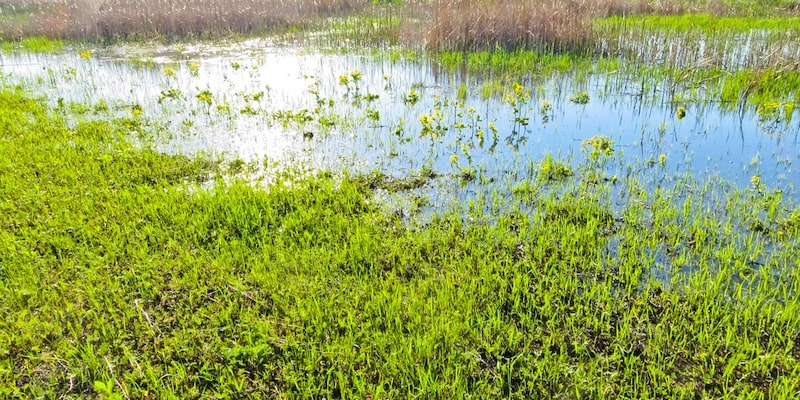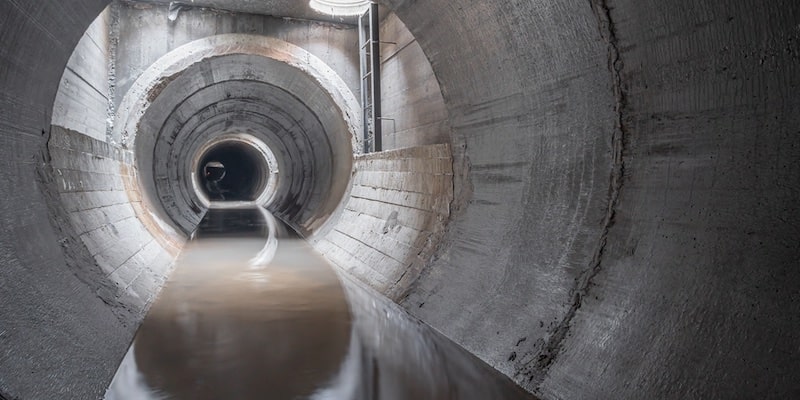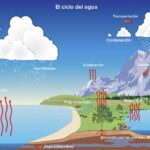We explain what runoff is and why it is essential for the water cycle. Also, the types of runoff that exist and how it is calculated.

What is runoff?
Runoff is the flow of water that, because it is not absorbed by the surface, moves over land. This process is fundamental in the water cycle because it represents the phase in which water, which has fallen as precipitation, flows over the surface and returns to bodies of water such as lakes, seas and oceans to be evaporated again.
When it rains, part of the water is captured by the vegetation and the soil, but if the intensity of the rain is high or if the soil is already saturated, the water cannot be completely absorbed and begins to move superficially.
The water that infiltrates and circulates below the surface constitutes a different type of runoff that is not surface but underground. In that case, water circulates beneath the earth and can re-emerge to the surface, flow into seas or oceans or be stored in large bodies of underground water called “aquifers”.
The amount of surface runoff depends on the amount and intensity of rainfall, the slope, and the absorption capacity of the soil.
Runoff in the water cycle
Runoff transports water from areas where precipitation falls to rivers, lakes, and oceans. This movement is essential to maintain the flow of water over the Earth and distribute it over the surface.
Besides, runoff transports nutrients essential for the life and development of plants, animals and microorganisms that make up the terrestrial and aquatic ecosystems of the planet.
Runoff also occurs when the sun melts the ice on top of mountains or in glaciers, causing a phenomenon called “thawing.” This process is fundamental for the hydrological cycle, since melted water circulates on the surface, flows into bodies of water and can be evaporated again so that the cycle has continuity.
Types of runoff

There are three types of runoff:
- surface runoff. It is produced by precipitation water that the soil cannot absorb. Driven by the force of gravity, water circulates over the surface from higher areas to lower areas. This type of runoff includes streams and rivers that circulate over the earth's surface.
- hypodermic runoff. It occurs when water circulates below the surface but at a very shallow depth. As it circulates in the upper layers of the soil, it usually re-emerges and adds to surface runoff.
- underground runoff. It occurs when infiltrated water reaches greater depth and circulates through the lower layers of the soil. This type of runoff can be stored in underground aquifers or circulate below the surface to seas and oceans.
The runoff coefficient
The runoff coefficient is a measure used to express the proportion of precipitation that is converted to runoff over that absorbed by the soil.
To calculate the runoff coefficient, the actual flow (the amount of water that circulates on the surface after a rain event) is generally compared with the theoretical or potential flow (the amount of water that theoretically could have flowed if all the precipitation had been converted into runoff). The relationship between these two values provides the runoff coefficient.
urban runoff

Urban runoff presents distinctive particularities compared to rural areas, since in the city Rainwater circulates through streets and paved surfaces instead of being absorbed by the ground.
Asphalt is a waterproof material that drastically reduces the soil's ability to absorb rainwater. Instead of infiltrating, precipitation accumulates on the surface and becomes runoff.
For this reason, most urban areas are equipped with sewer systems designed to collect and convey runoff to pipes beneath the streets.
Sewers and underground pipes play a critical role in runoff management by removing water from the streets and transporting it to its mouth below the surface. This prevents water from accumulating on the surface and causing flooding.
- Evaporation
- Condensation
- Precipitation
References
- Pech, P and Regnauld, H (1997) Physical geography. Hernandarias Distance Foundation. Teaching Editorial.
- Tarbuck, E and Lutgens, F (2005) Earth Sciences. An introduction to physical geology. Prentice Hall.
- Valdivieso, A (sf) What is runoff? https://www.iagua.es/
- Vera, C and Camilioni, A (sf) The water cycle. Ministry of Education, Science and Technology of the Argentine Nation. http://www.bnm.me.gov.ar/
- Zapperi, P. (2014) Characterization of urban runoff in the city of Bahía Blanca. University Magazine of Geography. https://www.redalyc.org/


